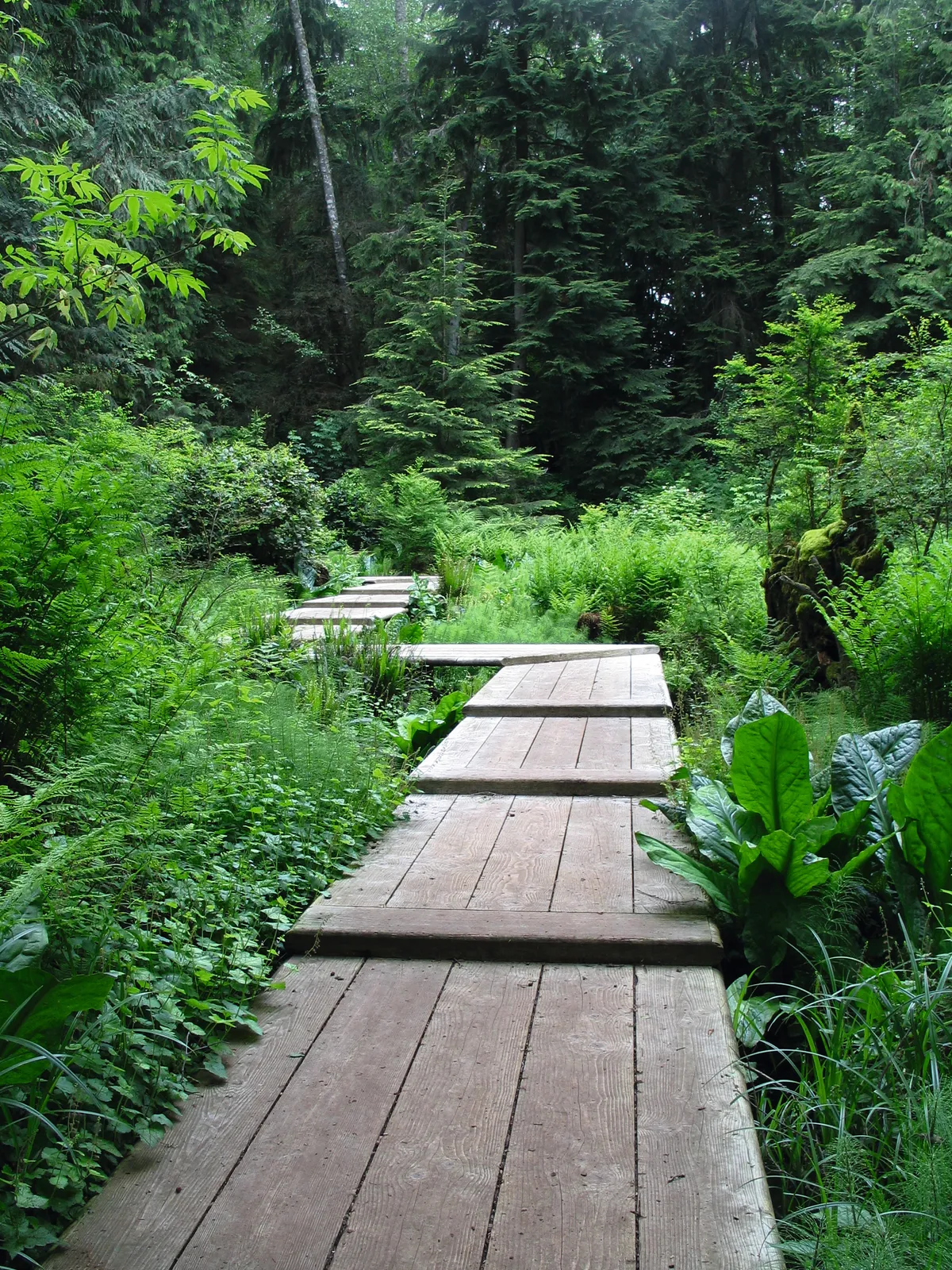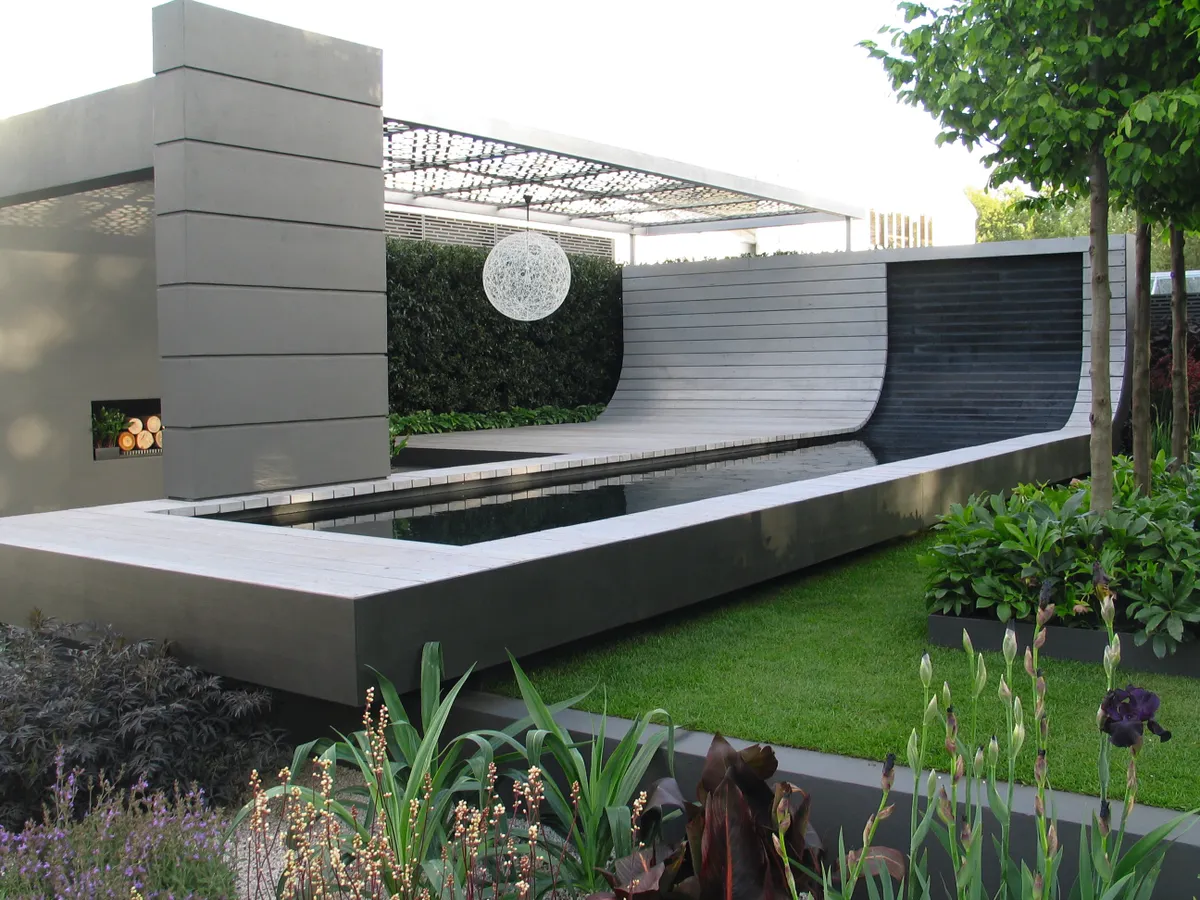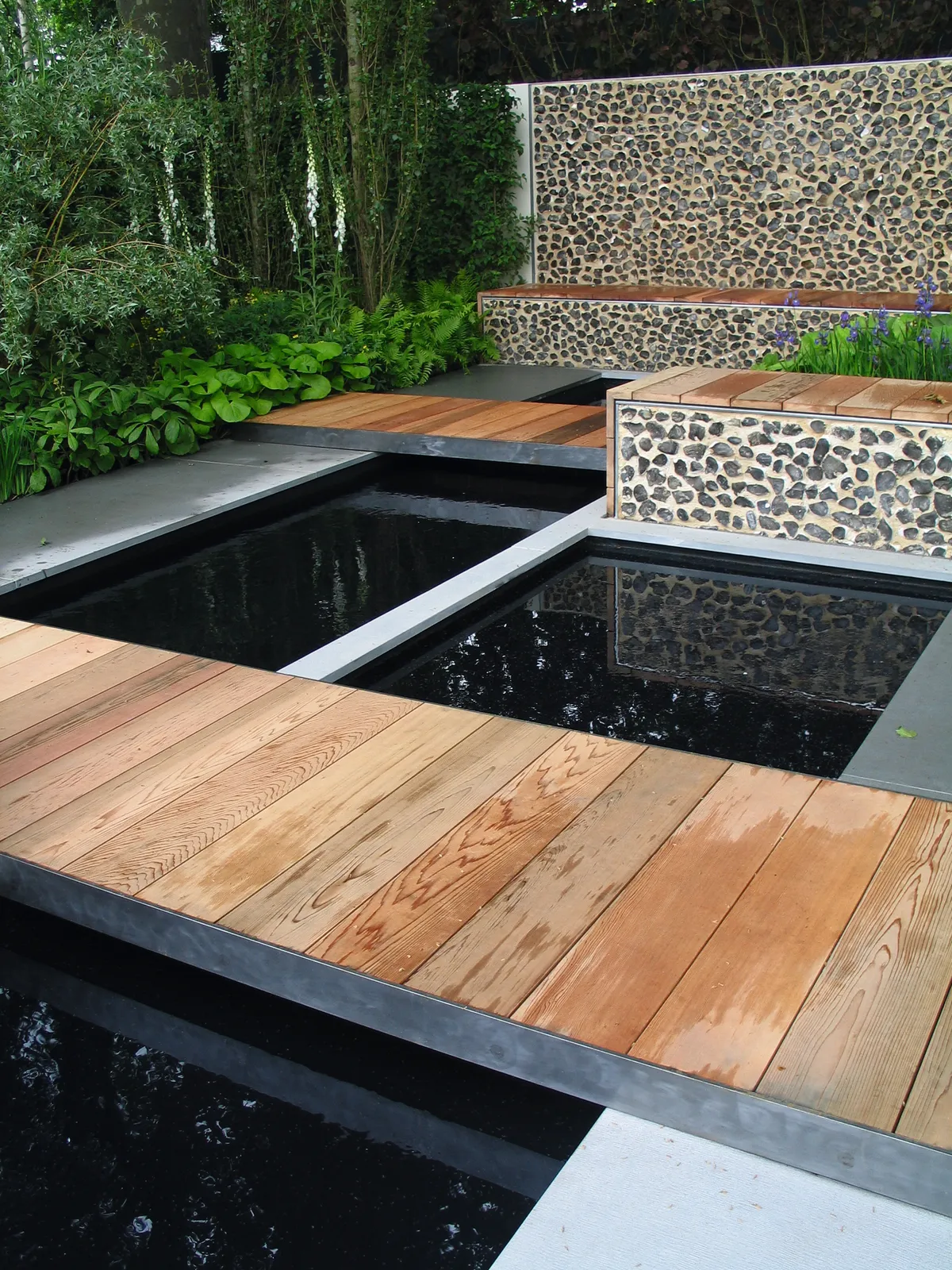Garden decking can be a wonderful element to add to a garden design. It's a great option if you want a space to entertain in the garden, but would rather not choose paving or gravel. Decking allows old unsightly paving to be covered up, and can lead the eye, and any garden visitors through to another area of the garden. Timber is the traditional material for decking but there are other options on the market, just be wary of following design trends. Good design and fashion are two completely different concepts, but they are not mutually exclusive; fashions and trends affect the choices we make and provide us with signs of our times. Technological advances in materials can change the designer’s palette and transform the appearance of our houses and gardens. Below you'll find decking ideas and advice and how to get the most from your garden decking, from materials to maintenance.
Decking ideas
How to use decking in the garden

Decking has been used extensively as a cover-all for difficult or unsightly terrain. It is often selected because of the reduced ground preparation required, providing a surface that floats over the existing ground, supported on a system of joists, beams and timber posts. The amount of excavation can therefore be restricted to the preparation of holes for any supporting posts, together with their foundations, although it is useful to cover the ground surface in a weed preventing blanket, and this in turn with gravel. This will prevent, or at least restrict, excessive weed growth.
For the most part, decks remain close to ground level, completely disguising what lies beneath. However, where changes of ground level are dramatic, the view into the space below the decking may be revealed. It may be possible on extreme slopes to utilise this space, perhaps introducing storage, although what you store will need to be weatherproof. Otherwise, planting, trellis panels, or valance boards attached to the sides of the decking construction can resolve what can be an unsightly issue. In some urban areas it may also be wise to block in this space to prevent rat infestation.
Where decking levels are raised over 30cm above ground, you will need to consider a balustrade for safety. Timber systems can be easily built into the structure of the deck, although steel and glass, or Perspex, can also be used, the latter being a much less weighty option.
How to choose the right timber for your decking
When considering timber decking there are two main choices that relate to the type of timber used. Treated softwoods are lower in price, but not generally as resilient as the more expensive hardwood counterparts. Southern yellow pine is currently a favourite softwood for decking and ipe or balau provide strong and durable hardwoods. Softwood treatments will extend the life of decking, but most garden designers agree that hardwoods provide a longer-term investment when it comes to decking.
Some garden designers work with hardwoods in the foundation levels of the decking – those timbers that may be in contact with damp ground – but save costs by specifying a softwood decking surface. Special steel feet or foundation fixings and joist hangers can lift timbers clear of ground contact, which means that the whole deck can then be produced in treated softwood.
Alternatively, engineering brick strips can be used as supports on to which joists and deck boards can be fixed. This can reduce the depth needed for full beams and uprights – particularly useful in smaller gardens.
What to consider before fixing decking in place

For a sleek, high-quality finish, hardwood deck boards probably win because of their tighter grain, but one would also need to consider the details of fixings and the sizes and dimensions of the decking boards as part of the overall finish. It is possible to use ‘invisible fixings’ in which the side of the deck board is attached to the joist beneath. When the adjacent board is in place, the fixing then disappears to leave a surface of pure timber. Most often screw fixings are used, which should be countersunk, partly to improve the look and partly for safety. These countersunk fixings can be plugged or backfilled to reduce their impact on the decking surface in order to lose their pattern. In all cases it is important to keep the shape and form of decks as simple as possible. Complex shapes or forms will lead to highly complicated foundations and support structures with some awkward joints, cuts and fixings on the surface. Curves and angles in particular can create both visual and practical problems.
Practical decking considerations: damp and slippery surfaces
Decking has added value over solid paving as they can be used to relate to the internal floor level of the house, providing a consistent surface and a strong visual link between the interior and exterior spaces. There are important issues to consider with this solution as, technically, a paving surface should not stand above the damp-proof membrane used to protect the building from rising damp. Stone or brick paving, with their solid base, will bridge the damp proofing and create problems, but decking, as a suspended floor, can resolve this issue if the structure is freestanding and not attached to the house.
There may still be a possibility of rain splashback, especially with summer downpours or driving rain. The separation of the decking from the house wall is thus important, allowing water to drain and air to circulate. It may also be useful to consider introducing a protective canopy or porch over doors or French windows as this can prevent rain penetrating the interior. In most modern houses the damp-proof course should be noticeable in one of the mortar joints above ground level. In older properties look for air bricks, which allow air to circulate in the cavity beneath suspended internal timber floors. These openings must not be blocked.
One major criticism of timber decking is that it can produce a slippery surface. This is caused by surface dampness and warmer temperatures, which encourage algae to grow, creating the slipperiness. This also happens on natural stone and concrete, especially if the surface is smooth. Maintenance is key to avoid this, see advice below.
Caring for your timber decking

Maintenance of your decking is the best method of dealing with slippery surfaces as washing the deck with a light solution of bleach will kill the algae. Some decking companies produce profiled boards to create better grip, but these tend to harbour the algae as the recesses remain damp or wet for longer. Non-slip strips can be designed into the decking, running between the boards to produce a safer surface. Take care not to site decks beneath heavy shade-bearing trees; in general they will also work better, especially in the winter, on south or southwest facing façades.
Creating the perfect finish on your timber decking
Timber weathers in the open air and will change colour and appearance considerably if left to its own devices. The warm glow of new wood will be lost within a season to a rather beautiful silver grey, but if this doesn’t suit your taste, oiling the timber can preserve the colour if you are happy to maintain this every year. Varnish is not a suitable finish, as this will peel and bubble over time, creating an unsightly result.
Stains are the best method of changing the colour and character of decking timber as they are absorbed into the wood, helping to feed and preserve its quality. Darker stains, such as black or dark brown, can be applied with ease, but lighter stains or clear colours are also possible. In such cases you will need to apply an opaque white stain first, followed by the colour of choice – virtually anything is possible from bubblegum pink to, dare I say it, blue. There goes the brass band again – Alan Titchmarsh, you have a lot to answer for.
KEY POINTS TO TAKE AWAY
- Timber used for decking should be certified as coming from renewable plantations with a transparent trail from source to end product, including a Forest Certification scheme.
- Site decking where it will gain maximum exposure to the sun – this will help to dry out any surface moisture on the deck. The shorter days and lower suns of winter provide the moist conditions for algae to thrive.
Useful websites
Decking specialist for the domestic garden market.
A wide range of advice, often illustrated and well explained by former landscape contractor, Tony McCormack. Despite Tony’s obvious antipathy to decking he still provides some very sound advice for would-be ‘deckers’.